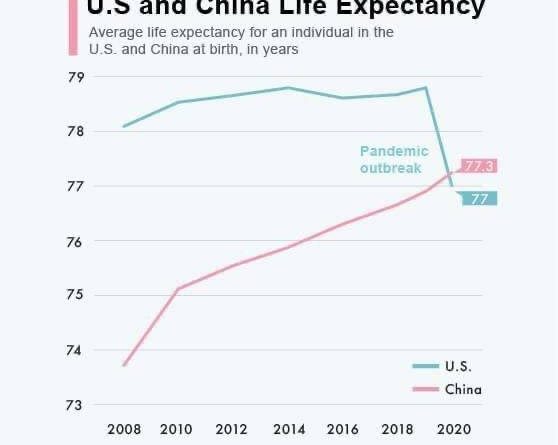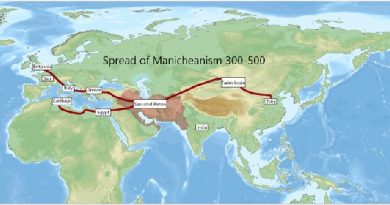未来属于谁?(The Future belongs to whom?)
Xiaoming Guo 郭晓明
上世纪80年代末90年代初,世界发生了重大变化,冷战结束了,一个超级大国苏联悄无声息地就解体了。这是一个世纪之谜。连狗急跳墙,死鸡撐硬脚的现象都没出现,一个超级大国自废武功,悄然地退出了历史舞台。
学术界把前苏联、东欧、中国和印度统一划归为转型经济,都是从计划经济转型为市场经济。这种归类肯定是漏掉了一个很重要的因素。如果大家一起转型,中国底子是最差的,学术界普遍认为中国改革开放前经济到了崩溃的边缘。所以,如果大家一起转型,应该是俄罗斯发展比中国好呀。中国超过印度,无非就是转型时间早了十年左右,但前苏联和东欧工业化早已完成,东欧的工业曾经是中国的向往。想一想,中国的辽宁号航母还是买的乌克兰建造到半截的船,可见前苏联和东欧工业化比中国早得多。
戈尔巴乔夫89年访华,戈尔巴乔夫见证了中国改革开放的艰难时刻,回国后就助推了苏联解体,和当时西方舆论是密切相关的。在所有转型经济中,中国鹤立鸡群,独树一帜,这是基本事实。中国和其它转型经济不同的地方,就是还有共产党领导。这两个简单的事实,为什么西方学术界就视而不见呢。不仅仅是视而不见,而且一致认为共产党领导和市场经济格格不入,认为中国没有前途,认为中国很快就要不崩溃了,认为中国就是一堆干柴,一个火星就能烧起来冲天大火,中国经济就是坐在火山口上,随时都可能灰飞烟灭。自上世纪最后十年到本世纪开初十多年,西方对中国谆谆教导,为中国树了很多民主榜样,要中国放弃共产党领导,先以前苏联和东欧作为中国的榜样,后以印度这个全世界最大的民主作为中国的榜样,再有南非民主做中国榜样,还有阿拉伯之春,还有南苏丹公投独立等,向中国展现世界民主潮流浩浩荡荡。苏东剧变以后,前苏联和东欧已经发生了四次战争了:科索沃战争,格鲁吉亚战争,亚美尼亚战争,乌克兰战争。都是转型经济,经济没上去,动乱还频发。其实,中国转型并非没有理论,中国学术界是有理论的,那就是中国特色社会主义理论,这种东方黄土高坡上的理论土里土气,被西方学术界鄙视而视而不见,连国际马列运动的理论界都难以接受。
中国经济转型和其它国家经济转型有一个根本的不同,中国改革开放是经过十年的理论界辩论,在中国国内接受了市场经济与社会主义相容的思想,主动转型搞市场经济,主动开放融入世界经济。而前苏联。东欧和印度,是在西方学术思想渗透下,在意识形态缴械投降、接受了西方市场经济思想、以膜拜西方学术界的态度转型。中国转型是中国主动转型,其它转型国家是西方思想文化渗透的战果。中国的经济转型,是中国共产党主动的转型,是共产党主主导的马克思主义运动的演化和发展。而其它转型国家是抛弃了马克思主义全盘接受资本主义学术思想的转型。中国不排斥西方思想,中国大量引入西方经济学教材和著作,那些都是西方走私偷运入前苏联进行思想渗透的书籍,而这些书籍在中国大学里都大量翻译为学校教材。但中国有没有抛弃马克思主义,马克思主义依然是大学必修课。而前苏联和东欧则抛弃了马克思主义而拥抱西方思想。可以说,中国是当今世界思想最开放的国度,处于思想界百花齐放百家争鸣的时代,这是大国气度,也是盛世景象。
理想的社会主义是按劳分配,但中国特色社会主义完全吸纳了市场经济原则,按要素分配。生产三大要素:资本、原材料和劳动。其中,资本食利,原材料食租,劳动力才真正产生剩余价值。如石油产出国经济很好,收入很高,靠的是石油资源的级差地租。美国经济很好,靠的是华尔街金融垄断食利。中国是制造大国,靠的是勤恳劳动。按照市场要素分配,按照投入到生产中的要素分配,是西方主导的全球资本主义市场经济规则。剩余价值分成三块,全球经济体内产生的剩余价值按照要素分配,西方得利,中东得租,中国得产业利润。从严格的古典马克思主义理论来说,中国依然是南方被剥削的发展中国家,为全球经济注入剩余价值。这是中国特色社会主义理论不被国际马列运动理论家们所接受的原因。中国特色的社会主义是马克思主义与中国具体实践相结合的结果,是马克思主义与中国传统文化相结合的结果。以中国文化和为贵的理念,以中国文化世界大同的理念,中国没有为百年屈辱复仇的心理,没有仇富的劫富济贫心理,承认既成事实,面相未来,以相互尊重互利共赢的态度,融入到西方主导的资本主义经济秩序中。
中国改革开放,就是这样发展起来的,明知是马克思经典理论中讲的资本剥削,但积极引入国际资本,发展了中国经济。当发展的红利能兼顾投入各方的收益,这就是不是剥削,这就是市场等价交换。被美国软实力鼓噪起来的西方白左,说中国一带一路投资非洲是帝国主义殖民主义,是资本剥削,但中国就是这样被“剥削”引入外资发展起来的,中国尊重它国制度选择,不干涉他国内政,和西方几百年来帝国主义侵略战争霸占殖民地完全不同,把西方帝国主义和殖民主义的帽子戴到中国头上,是恶意扭曲历史事实。剩余价值本质上就是人类生产超出生活使用的部分,不是资本主义社会才有,即便共产主义社会也还会有,这是人类进步的基础。只要生活使用的少于生产产出的,才有财富积累,才有人类进步。马克思说的剩余价值是等价交换下,劳动力创造的价值高于劳动力再生产(生活必需)需要的成本。剥削是仗势欺人,是以生产资料的所有带来的讨价还价优势压低工资。中国特色社会主义走共同富裕道路,剩余价值按照要素投入分配,保障了人民生活水平共同提高,不违反马克思理论。马克思理论是经济学科学理论。
如果美国和中国都是市场经济,美国科技比中国发达,美国资本比中国雄厚,那中国经济不就永远落后于美国了吗?如果按照资本主义市场竞争经济规律,竞争会扩散技术促进人类进步,经济体量最终基于人口体量。有预测认为,2050年经济体的排名是中国、印度、美国、印尼和巴西。这种排序大致就是人口排序,只是印度人口已经超过中国了。但是,如果美国不能容忍中国超过美国,难道美国就能容忍印度也超过美国?这种预测,大概就是以中国30年前的状态相当于印度今天的状态,既然中国能超过美国,印度过30年也能超过美国。这是把美国,中国和印度都放在资本主义市场经济制度下做的预测。那么,如果发达国家呢?如今发达国家既是军事同盟也是产业链同盟,其人口与中国或印度相当,如果制度一样,生产模式一样,美欧联盟应该可以永远比中国强,而且人口不比中国少,欧美可以吸纳更多移民,中国面临人口老年化,这样欧美就有绝对优势。这种预测的前提,是把中国的生产模式等同于欧美印的生产模式。但是,从我们对吧所有转型经济的当代史来看,这种假设前提是有问题的。如果欧美联盟永远比中国强,欧美就会毫不犹豫地打压中国,把中国压在“中等收入陷阱”里永世不得翻身。市场还有马太效应,穷者更穷富者更富。那么全球经济南北格局就永远无法改变。
在全球市场经济制度下,中国出口顺差,就是中国经济体效率更高,就是中国经济体是一个增长的经济体;美国出口逆差,就是美国经济体是效率较低的经济体,就是美国经济体是一个正在缩小的经济体。这是资本寻求高回报的结果。哪里投资回报高就投资到哪里去。那么,为什么中国经济体效率高呢?“要想富先修路”,中国基础设施好,中国经济体总体交易成本低于其它国家。英国最早使用蒸汽机火车铁路,英国就成为了世界霸主,成为了日不落大英帝国。美国最早建设高速公路网,美国就取代了英国成为世界霸主。今天中国建设成了高速铁路网,城际交通时间相当于世界上很多大都市交通时间。即把中国归划为资本主义国家,以经济规律来考虑问题,也可以预测到中国经济会超越美国。
为什么中国就建设了那么多规模那么大的基础设施呢?这关系到一个根本问题,就是中国有更先进的生产模式,中国是社会主义经济;而美国的资本主义生产模式已经落后于中国了。所以,中国模式代表里人类的未来。中国经济的社会主义性质体现在共同富裕,以社会总体福祉为目标;西方资本主义经济的性质体现在资本回报率,体现在利润率,以资本盈利为目标。因此,很多工程中国可以实现,美国难以实现,这不是技术问题,而是生产模式问题。
以移动电话为例。中国用100人民币放到手机上,只要不打电话出去,接电话不收费,还有每日基础流量,可以用很久。100人民币换算为20元加币,20加元在加拿大连开机启动费都不够,再加20加元话费进去,十天半个月还没有打两三次电话,就这扣那扣的把话费扣没了。中国移动支付世界领先,就是通讯基础设施的普及产生的巨大社会效益。而社会效益为全民共享,但移动电话基础设施是几个公司承担。这些移动电话公司是国企,目标是全社会的经济效益,并非一两个公司的利润和投资回报。没有廉价的乞丐讨钱都能刷码的通讯基础设施,就没有移动支付普及的可能。中国移动电话覆盖边远山区,加拿大移动电话走出大都市和高速公路带,就没有信号了,因此移动支付难以实现。
社会主义政府是人民政府,人民信得过,因此疫情期间健康码的使用就能科学应对疫情。西方政府不是人民政府,人民不信任,健康码遭受抵制,人人都怕政府监视跟踪。这是经济体系本质的不同。没有人民对政府的信任,人民更不能对某公司信任,则不仅仅高速铁路建设障碍重重,工业4.0基础的大数据都难以被正义道德地收集管理。西方大数据都是几家大平台公司收集,公司使用大数据以盈利为目的,经常会损害消费者利益,遭到消费者诟病。这就是为什么工业4.0必然在中国最先实现的原因,原因就是中国先进的生产模式可以适应先进的科学技术生产力。
中国的转型是中国坚持社会主义基础下的转型,基本保持了社会主义的生产关系。资本主义生产关系是金钱交易关系,人与人之间的关系都是零和博弈关系,交易价格高低,就是一方之得为另一方之失,工厂管理层和工会是利益冲突对立关系,工人的主观能动性被完全排除出生产过程。社会主义生产关系是平等尊严的社会分工关系,管理层和工人是共同富裕的关系,是共赢关系,有相互信任,在生产中工人的主观能动从得以充分发挥。在社会主义生产关系中,工人的劳动得到尊重,工人的尊严得到保护,劳动生产过程是生活精彩的一部分。资本主义生产关系中,公司盈利了,分奖金的是管理层,工人没有劳动积极性,工人增加了劳动产出,其业绩变成管理聪明的业绩,不是工人努力的业绩。因此,在资本主义制度下,劳动是一种负担,是一种谋生不等得不承受的痛苦,只有下班以后才有生活。生活的意义是幸福生活的基础,资本主义社会劳动生产时间对工人生活是负担,而不是工人施展能力的生活。中国海外工程经常往往会遇到这种情况。中国海外工程使用中国自己的劳工,进度很快,一旦雇佣当地劳工,特别是有工会的劳工,工程进度就大大受阻,因为语言问题,雇佣当地劳工必用当地包工头,当地包工头管理与当地劳工利益冲突。生产关系突出表现在管理模式,表现在劳资关系。资本主义生产模式下劳资关系是冲突对立关系,社会主义生产模式下劳资关系是分工合作关系。
中国特色社会主义是一个比西方资本主义制度更优越的生产模式,有产出更多更大的社会效益,包括劳工的身心健康。社会主义文化生活与生产关系密切相关,如中国春晚往往有歌颂农民工或者快递小哥的节目,劳动者得到社会的尊重。生活是否幸福的一个决定性因素在于生命是否有意义,当一个青少年看不到生命的意义的时候,就会产生焦虑和抑郁,就会去吸毒。欧美这些资本主义发达国家,青少年吸毒的比例高达三分之一。而中国这样的社会主义国家,吸毒的青少年低于千分之一。抑郁与焦虑也会引发头疼。美国止痛片市场在2020年是637亿,而中国的止痛片市场在2020年是60亿。当然,止痛片不仅仅针对头疼,也针对脚痛等其它疾病,但是,其它疾病引起的头疼应该中国和美国相差不多,以人口计,中国其它疾病需要的止痛药应该大致是美国的4倍。另一个幸福指标就是人均寿命预期,虽然中国人均GDP远远低于美国,大约只是美国的五分之一,但中国的人均寿命预期已经超过了美国。资本主义制度以金钱衡量一切,包括生活水平,以消费多少计。而社会主义经济不是为了利润,而是为了人民生活的幸福,物质消费是幸福生活的必要基础,但不是全部,一个平等和谐的生产关系是幸福生活的重要组成部分,当劳动得不到尊重,劳工没有尊严,再多物质消费也没有幸福感。这就是为什么美国暴力犯罪多,暴力犯罪也是需要消费的,那得有钱购买枪支。吸毒也是一种消费,因此加拿大大麻合法化,可以促进消费,提高经济增长,但那不提高幸福社会总体幸福水平。
人类未来的生产模式,必然是以较小的资源消耗维持较高的幸福水平。美国以其5%的全球人口,消耗全球30%的资源。发达国家以期四分之一的全球人口,消耗全球四分之三的资源。资本主义制度不是可持续的经济制度。中国特色社会主义制度,能够以最小的资源消耗让人民过上更幸福的生活,是人类未来的生产模式。只有社会主义能够救中国,只有社会主义能够救人类。
以人类道德正义计,联合国应该支持中国特色社会主义制度。就经济竞争能力而言,中国特色社会主义制度必然使得中国比西方发展得更快更好而且与社会和生态环境更和谐。
In the late 1980s and early 1990s, major changes took place in the world. The Cold War ended, and a superpower, the Soviet Union, disintegrated quietly. This is a mystery of the century. USSR did not even give a dying kick. A superpower abolished its power and quietly withdrew from the stage of history.
Academic circles classify the former Soviet Union, Eastern Europe, China, and India as transition economies, all transitioning from a planned economy to a market economy. This classification certainly misses a very important factor. If everyone transforms together, China’s foundation is the worst. Academic circles generally believe that China’s economy was on the verge of collapse before the reform and opening up. Therefore, if everyone transforms together, it should be that Russia’s development is better than China’s. China surpassed India because the transition was about ten years earlier, but the industrialization of the former Soviet Union and Eastern Europe had already been completed, and the industry in Eastern Europe was once China’s yearning. Think about it, China’s Liaoning aircraft carrier is still a half-built ship from Ukraine, which shows that the former Soviet Union and Eastern Europe industrialized much earlier than China.
Gorbachev visited China in 1989 during the Tiananmen Square Incident. Gorbachev witnessed the difficult time of China’s reform and opening up. After returning to China, he contributed to the disintegration of the Soviet Union, among the bombarding of western media on the Tiananmen Incident. Among all the economies in transition, China stands out from the crowd, and this is a basic fact. The difference between China and other transitional economies is that it still has the leadership of the Communist Party. Why does Western academia turn a blind eye to these two simple facts? Not only turn a blind eye, but also agree that the leadership of the Communist Party is incompatible with the market economy, that China has no future, that China will collapse soon, and that China is a pile of dry wood that can be ignited by a single spark, and the Chinese economy is Sitting on the crater, it may be wiped out at any time. From the last ten years of the last century to the first ten years of this century, the West taught China earnestly and set many examples of democracy for China. To ask China to give up the leadership of the Communist Party, the former Soviet Union, and Eastern Europe should be used as models for China. And then India, the world’s largest democracy should be an example for China. South Africa’s democracy is an example for China, the Arab Spring, and South Sudan’s referendum on independence have shown China the mighty trend of democracy in the world. After the drastic changes in the Soviet Union and Eastern Europe, there have been four wars within the former Soviet Union and Eastern Europe: the Kosovo War, the Georgian War, the Armenian War, and the Ukraine War. They are all transitional economies, the economy has not improved, and turmoil is still frequent. In fact, China’s transformation is not without theories. There are theories in Chinese academic circles, and that is the theory of socialism with Chinese characteristics. It is difficult for western theoretical circles to accept it.
There is a fundamental difference between China’s economic transformation and other countries’ economic transformation. China’s reform and opening up have undergone ten years of debate in Chinese theoretical circles. It has accepted the idea of compatibility between a market economy and socialism in China, actively transformed into a market economy, and actively opened up to join the world economy. The former Soviet Union, together with Eastern Europe and India, were infiltrated by Western academic thought, surrendered their ideology, accepted Western market economic thought, and transformed with an attitude of worshiping Western academic circles. China’s transformation is China’s own initiative, while other countries in transition are the result of the infiltration of Western ideology and culture. China’s economic transformation is the transformation initiated by the Communist Party of China and the evolution and development of the Marxist movement dominated by the Communist Party. Other countries in transition have abandoned Marxism and fully accepted the academic thought of capitalism. China does not reject Western ideas. China has imported a large number of Western economics textbooks and books. Those books were smuggled by the West into the former Soviet Union for ideological infiltration, and these books were translated into school textbooks in Chinese universities. But China does not abandon Marxism. Marxism is still a 101 course in universities. The former Soviet Union and Eastern Europe abandoned Marxism and embraced Western thought. It can be said that China is the most open-minded country in the world today, and it is in an era when a hundred flowers bloom in the ideological world and a hundred schools of thought contend.
The ideal socialism is distribution according to work, but socialism with Chinese characteristics fully absorbs the principles of the market economy and distributes according to factors. Three factors of production: capital, raw materials, and labor. Among them, capital gets profit, raw material gets rent, and labor gets a salary. For example, an oil-producing country has a good economy and a high income, relying on the differential land rent of oil resources. The U.S. economy is very good, relying on the rentier profits of Wall Street’s financial monopoly. China is a big manufacturing country, that relies on hard work. Distribution according to market factors, the factors that input into production, is the rule of the global capitalist market economy dominated by the West. The surplus value is divided into three parts. The surplus value generated in the global economy is distributed according to the factors. The West benefits, the Middle East gains rent, and China gains industrial profits. In strictly classical Marxist theory, China remains an exploited developing country in the South, injecting surplus value into the global economy. This is the reason why the theory of socialism with Chinese characteristics is not accepted by theorists of the international Marxist-Leninist movement. Socialism with Chinese characteristics is the result of the combination of Marxism and China’s concrete practice, and the result of the combination of Marxism and traditional Chinese culture. With the concept of Chinese culture and harmony as the most precious, and with the concept of Chinese culture and world harmony, China has no mentality of revenge for a century of humiliation, no mentality of robbing the rich and helping the poor who hate the rich, recognizes the fait accompli, looks forward to the future, and adopts an attitude of mutual respect, mutual benefit, and win-win cooperation, into the capitalist economic order dominated by the West.
This is how China’s reform and opening up developed. Knowing that it was the exploitation of capital mentioned in Marx’s classic theory, it actively introduced international capital and developed China’s economy. When the dividends of development can take into account the benefits of all stack holders, this is not exploitation, and this is an equivalent exchange in the market. Western white leftists who have been agitated by the soft power of the United States say that China’s investment in Africa along the Belt and Road is imperialist colonialism and capital exploitation, but this is how China was “exploited” and developed by introducing foreign capital. China respects other countries’ political system choices and does not interfere. China’s behaviors are completely different from the Western imperialist wars of aggression and occupation of colonies for hundreds of years. Equalling western imperialism and colonialism with China’s BRI is maliciously distorting historical facts. Surplus value is essentially the extra part of human production more than consumption. Surplus value is essential not only in a capitalist society but also in a communist society, which is the basis of human progress. Only if the use of living is less than the output of production, there can be wealth accumulation and human progress. The surplus value that Marx said is that under the exchange of equivalent value, the value created by the labor force is higher than the cost required for the reproduction of the labor force (necessary for a living). Exploitation is bullying, using the bargaining advantage brought by ownership of the means of production to drive down wages. Socialism with Chinese characteristics takes the road of common prosperity, and the surplus value is distributed according to the input of factors, which ensures the common improvement of people’s living standards and does not violate the Marxist theory. Marxist theory is a scientific theory of economics.
If the United States and China are both market economies, and the United States has more advanced technology than China, and the United States has more capital accumulation and control of world resources than China, then won’t China’s economy always lag behind the United States? According to the economic law of capitalist market competition, competition will spread technology and promote human progress, and the size of the economy is ultimately based on the size of the population. It is predicted that the ranking of economies in 2050 will be China, India, the United States, Indonesia, and Brazil. This ranking is roughly the same as the population ranking, except that the population of India has surpassed that of China. However, if the United States cannot tolerate China surpassing the United States, can the United States tolerate India also surpassing the United States? This kind of prediction is roughly based on the fact that the gap between China and the US 30 years ago is equivalent to the gap between India and the US today. Since China can surpass the United States in 30 years, India will also surpass the United States in 30 years. This is a prediction that puts the United States, China, and India under the same capitalist market economic system. If it took authoritarian China 30 years to surpass the US, should democratic India take less time to surpass the US? Say 10 years? Today, developed countries are both military alliances and industrial chain alliances, and their population is comparable to that of China or India. If the system is the same and the production model is the same, the US-EU alliance should always be stronger than China, and the population is not smaller than China. Europe and the United States can absorb more immigrants. China is facing an aging population, so Europe and the United States have an absolute advantage. The premise of this prediction is to equate China’s production model with that of Europe, America, and India. However, in light of our contemporary history of all transition economies, this premise is problematic. It cannot explain why China is rising. If the European and American alliance is always stronger than China, Europe, and the United States will not hesitate to suppress China, and put China in the “middle-income trap” forever. There is also the Matthew Effect in the market, the poor get poorer and the rich get richer. Then the North-South structure of the global economy will last forever.
Under the global market economy system, China’s export surplus means that the Chinese economy is more efficient, which means that the Chinese economy is a growing economy; the US’s export deficit means that the US economy is a less efficient economy, that is, the US economy is a shrinking economy. This is the result of capital seeking high returns. Where the return on investment is high, invest there. So why is the Chinese economy so efficient? “If you want to get rich, build roads first.” China’s infrastructure is good, and the overall transaction costs of the Chinese economy are lower than those of other countries. Britain was the first to use steam engine trains and railways, and Britain became the hegemony of the world that the sun never sets in the British Empire. The United States was the first to build a highway network, and the United States replaced Britain as the world hegemony. Today, China has built a high-speed railway network, and the intercity transit time is equivalent to the transit time of many metropolises in the world. Even if we classify China as a capitalist country and consider issues based on economic laws, we can also predict that China’s economy will surpass that of the United States.
Why did China build so many infrastructures on such a large scale? This is related to a fundamental premise, that is, China has a more advanced production mode, and China is a socialist economy. The capitalist production mode of the United States has lagged behind China. Therefore, the Chinese model represents the future of mankind. The socialist nature of the Chinese economy is reflected in the common prosperity, the goal of overall social well-being; the nature of the Western capitalist economy is reflected in the ratio of return on capital, reflected in the ratio of profit, with the goal of capital profitability. Therefore, many projects can be realized in China but are difficult in the United States. This is not about technical capability, but a production mode.
Take mobile phones as an example. Chinese can have a cell phone for a basic monthly fee of about $1 dollar with a daily data allowance. 100 RMB can last for a long time for a cellphone user because cellphone users can communicate by WeChat using only data and can use wifi. As long as you don’t make calls, there is no charge for answering calls, and there is daily basic traffic, which can be used for a long time. 100 RMB is converted into 20 Canadian dollars, 20 Canadian dollars is not enough for account setup and activation fees in Canada. If one adds an additional $20 CND to a sim card, the $20 will finish by this and that charge within two weeks before he or she hardly uses the cellphone. China’s mobile payment is the world leader, which is the huge social benefit generated by the popularization of communication infrastructure. While the social benefits are shared by the whole people, the mobile phone infrastructure is borne by several companies. These mobile phone companies are state-owned enterprises, and their goal is the economic benefits of the whole society, not the profits and investment returns of one or two companies. Without a communication infrastructure where beggars can bag money by swiping QR codes, there will be no possibility of the popularization of mobile payment. China’s mobile network cover even remote mountainous areas and Canadian mobile phones have no signal when they go out of metropolitan cities and highway belts, so mobile payment is difficult to realize.
The socialist government is the people’s government, and the people can trust it. Therefore, the use of health codes during the COVID pandemic is a scientifically respond. The Western government is not the government of the people, the people do not trust it, the health code is resisted, and everyone is afraid of government surveillance and tracking. This is a fundamental difference in the economic system. Without the people’s trust in the government, and the people’s trust in a certain company, not only will there be many obstacles in the construction of high-speed railways, but also the big data that is the foundation of Industry 4.0 will be difficult to collect and manage in justice and ethic. Western big data is collected by several large platform companies. Companies use big data for profit, which often harms the interests of consumers and is criticized by consumers. This is why Industry 4.0 will be realized first in China because China’s advanced production mode can adapt to advanced scientific and technological productivity.
China’s transformation is a transformation based on China’s adherence to the socialist foundation, basically maintaining socialist production relations. The capitalist production relationship is a money transaction relationship, and the relationship between people is a zero-sum game relationship. Any deviation from a fair transaction price means one party’s gain is the other’s loss. Factory management and trade unions have conflicts of interest. Workers’ initiatives are virtually completely excluded from the production process. The socialist production relationship is a social division of labor with equality and dignity. The management and workers are a relationship of common prosperity and a win-win cooperation relationship. There is mutual trust and the subjective initiative of workers can be fully exerted in production. In socialist production relations, the labor of workers is respected, the dignity of workers is protected, and the process of labor productivity is a wonderful part of life. In capitalist production relations, when the company makes a profit, it is the management team who gets the bonus. The workers have no incentive to increase their labor output. Good performance is attributed to the performance of smart management, not the hard work of workers. Therefore, under the capitalist system, work time is a burden, a kind of pain that cannot be considered part of living. There is only life after work hours. The meaning of life is the foundation of a happy life. Work hours in capitalist society are a burden to workers’ lives, not a life for workers to manifest their abilities. China’s overseas projects often encounter this situation. The progress is very fast when using Chinese labor. Once local labor is hired, especially labor with trade unions, the progress of the project will be greatly hindered. Because of language problems, local contractors must be used to hire local labor. The local contractor management and local labor have a conflict of interest. Production relations are prominently manifested in the management mode and labor relations. The relationship between labor and capital under the capitalist production mode is a relationship of conflict and opposition, while the relationship between labor and capital under the socialist production mode is a relationship of a division of labor and cooperation.
Socialism with Chinese characteristics is a production mode superior to the Western capitalist mode, and it can produce more and greater social benefits, including the physical and mental health of workers. Socialist cultural life is closely related to production. For example, the Chinese Spring Festival Gala often has performances praising migrant workers or delivery boys, and workers are respected by society. A determinant of whether life is happy is whether life is meaningful. When a teenager cannot see the meaning of life, he will have anxiety and depression, and he will abuse drugs. In capitalist developed countries such as Europe and the United States, the proportion of young people taking drugs is as high as one-third. In a socialist country like China, the number of young people taking drugs is less than one in a thousand. Depression and anxiety can also trigger headaches. The U.S. painkiller market is about 63.7 billion in 2020, while China’s painkiller market is about 6 billion in 2020. Of course, painkillers are not only for headaches but also for other diseases such as joint pain. However, the pains caused by other diseases should be similar in China and the United States. In terms of population, the painkillers needed for other diseases in China should be roughly four times that of the United States. Another indicator of happiness is life expectancy per capita. Although China’s GDP per capita is far lower than that of the United States, which is only about one-fifth of that of the United States, China’s life expectancy per capita has surpassed that of the United States. The capitalist system measures everything in terms of money, including the standard of living, in terms of consumption. The socialist economy is not for profit, but for the happiness of people’s lives. Material consumption is the necessary basis for a happy life, but not all. An equal and harmonious production relationship is an important part of a happy life. When labor is not respected, workers have no dignity, and no matter how much material consumption there is, there will be no sense of happiness. This is why there are many violent crimes in the United States, and violent crimes also require consumption. One has to have money to buy guns. Drug use is also a kind of consumption, so the legalization of marijuana in Canada can promote consumption and increase economic growth, but it will not improve the overall happiness level of society.
The future production mode of human beings must maintain a higher level of happiness with less resource consumption. With 5% of the world’s population, the United States consumes 30% of the world’s resources. Developed countries account for a quarter of the global population and consume three-quarters of the world’s resources. The capitalist system is not a sustainable economic mode. Socialism with Chinese characteristics can enable people to live a happier life with the minimum consumption of resources, and it is the future production mode of mankind. Only socialism can save China, and only socialism can save mankind.
In terms of human moral justice, the United Nations should support socialism with Chinese characteristics. In terms of economic competitiveness, the socialist mode with Chinese characteristics will inevitably enable China to develop faster and better than the West and be more harmonious with the international and ecological environment.





